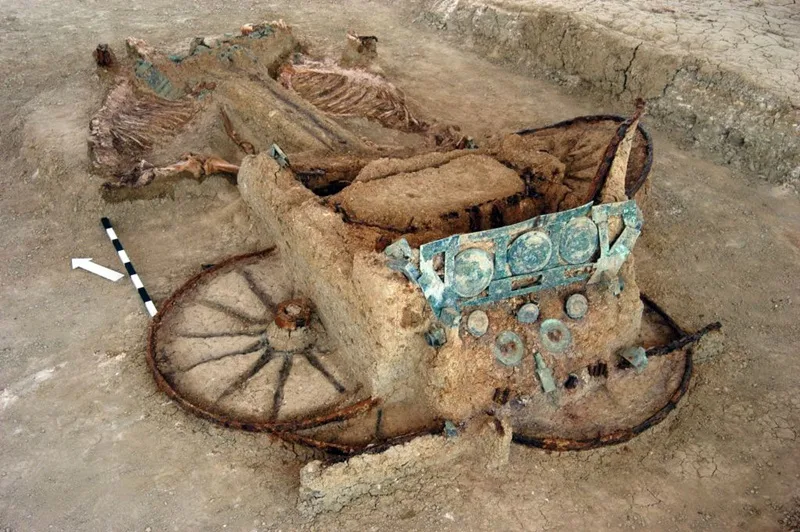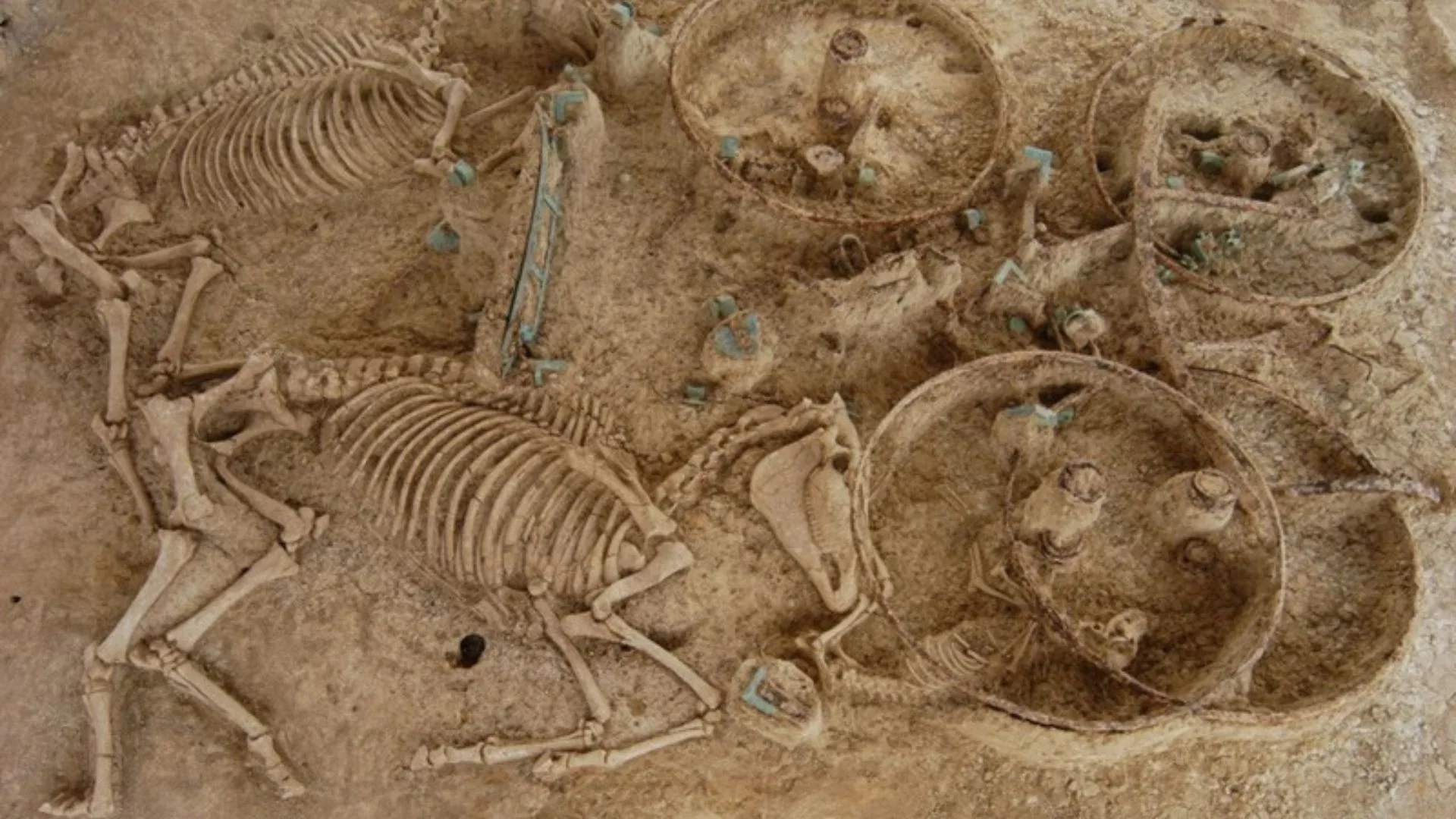The studies and works to create a visitable museum cover for the extremely rare findings of the Mikri Doxipara-Zoni tumulus in Evros, NE Greece, are progressing quickly, the Ministry of Culture said in an update, according to amna.gr
The tumulus is the only one in Greece where wheeled vehicles were found in such a good state. Specifically, it includes the cremated remains of three men and one woman, accompanied by five chariots with their horses, and another two burials of five horses.
All accessories on the chariots are preserved, down to the decorative metal parts, while two of them include impressions of their wooden parts. The entire group is dated between 100 AD and 150 AD, during the Roman imperial years in Greece.
First excavated by Diamantis Triantafyllos two decades ago, the findings of the tomb point to the community’s great wealth and the effort to guarantee a clear social identity, Culture Minister Lina Mendoni said in a statement.

Conservation and preparatory work on exhibiting the protected remains began in 2020, and the museum cover will allow visitors to see what the site looked like during the completion of the excavation. “The visitor will see in situ the burials of horses and the chariots, while the museum cases will show all the votives and other mobile artifacts,” Mendoni said, adding that the completion of the museum area in northern Evros will offer a development boost to the area.
The ministry’s statements said that the visitors will be able to see the cremation pits, while the bones of the 15 horses will be kept in the ground. The conserved funerary objects will be exhibited in cases by group.
There will be 18 independent stops. Among the many artifacts found besides the chariots’ and horses’ accessories, the excavation includes organic material, the largest group of bronze vessels found in Greece (19 complete vessels), and bronze medical cases with surgical tools, the best-preserved tool kits of imperial years found globally.
Source: amna.gr
